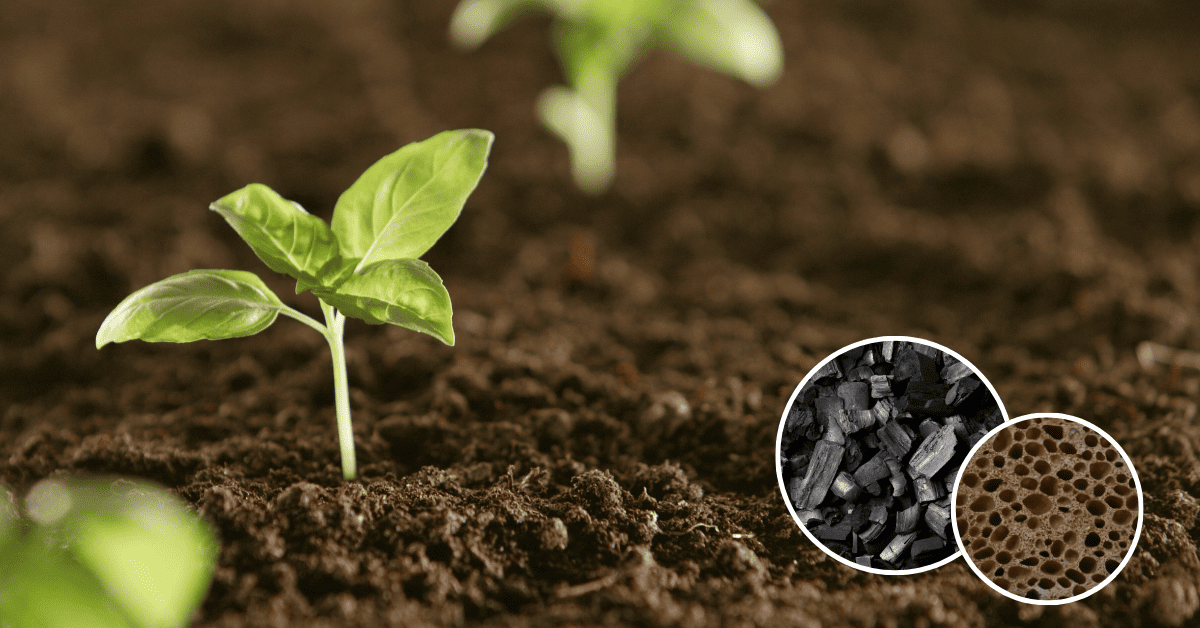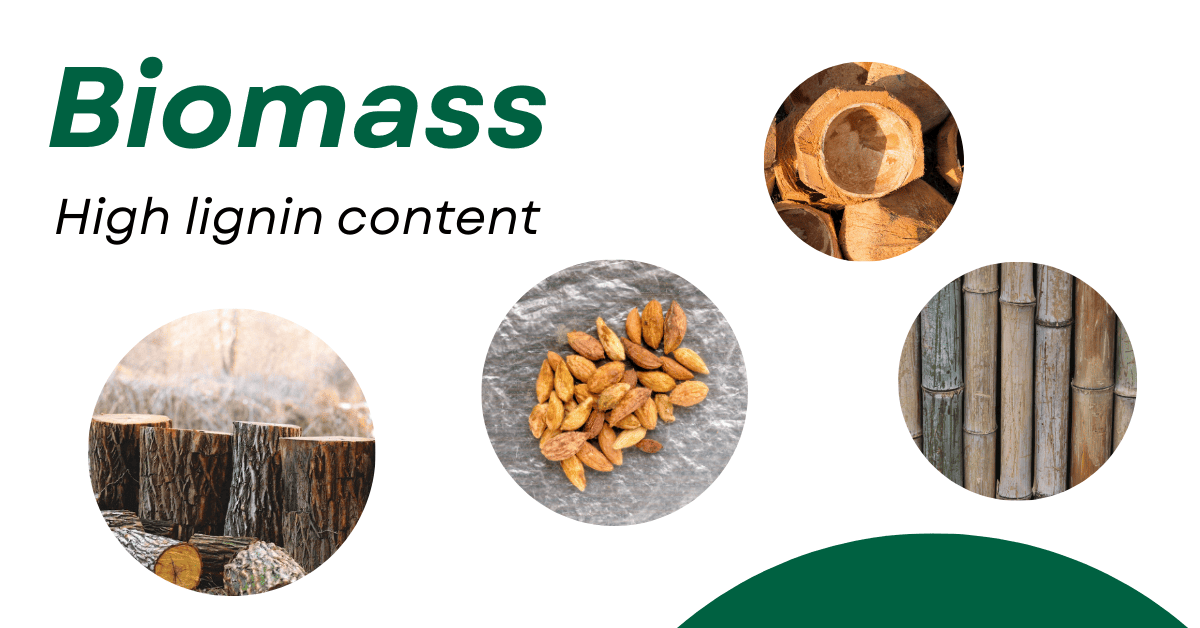What is Molar H/C Ratio of Biochar?
With the increasing global attention to carbon emission reduction, biochar is becoming one of the important roles in sustainable development. By converting biomass waste like agricultural waste and forestry residues into energy products, biochar provides a new solution for achieving carbon neutrality goals. The quality difference of biochar directly affects its performance and long-term stability in the environment, especially in carbon sequestration and soil improvement. As a key indicator for measuring biochar, the H/C ratio (hydrogen-carbon molar ratio) directly reflects its quality and stability.

Biochar produced from raw materials such as hardwood, softwood, bamboo, coconut shells, and olive pits usually has a lower H/C. They contain a higher content of lignin, a highly aromatic compound that is more likely to form a stable aromatic carbon structure after pyrolysis, thereby reducing the H/C ratio.

High cellulose content
Straw and herbaceous biomass has high cellulose and hemicellulose content, but low lignin content. It may lead to more volatile components during pyrolysis, incomplete carbonization, and relatively high H/C ratio. Such biomass includes rice husks, wheat straw, corn straw, elephant grass, sugarcane bagasse, etc.
High fat, high protein
Raw materials such as animal manure contain high levels of fat and protein. The hydrogen content in fat and protein is high, and a large amount of hydrogen and oxygen compounds will be produced during pyrolysis, making the H/C ratio of biochar relatively high.
As the pyrolysis temperature increases, the hydrogen in the biomass will volatilize in the form of water, hydrogen, methane, etc., resulting in a gradual decrease in the H/C ratio of the biochar, and its structure will become more aromatic and stable.
A higher heating rate will cause the pyrolysis reaction to occur in a shorter time, and some hydrogen may not have time to completely react and volatilize, and will remain in the biochar, making the H/C ratio of the biochar relatively high.
As people continue to study biochar in depth, more measurement criteria other than H/C molar ratio will be determined. Regardless of the evaluation criteria, the original intention of these rules is to promote the development of global carbon emission reduction. If you are considering a carbon removal project, HaiQi will be your reliable technical partner! We look forward to working with you to promote sustainable development!
Definition of H/C ratio
H/C molar ratio refers to the ratio of the molar number of carbon atoms (C) to hydrogen atoms (H) in biochar. It reflects the relative content of hydrogen and carbon in biochar. The H/C ratio can intuitively reflect the carbonization degree of biochar. Generally, as the degree of carbonization increases, the hydrogen element in biochar gradually decreases, the carbon element is relatively enriched, and the H/C ratio will gradually decrease. High-quality biochar usually needs to reach a certain level of carbonization. A low and stable H/C ratio means that the biochar has been fully carbonized, has a more complete aromatic structure and a higher carbon content, which is the basis for the good performance of biochar. Biochar with a low H/C ratio is more stable and less prone to degradation, making it very suitable as a long-term carbon sink. If the H/C ratio is relatively high, it means that the biochar may contain more aliphatic structures or incompletely carbonized parts, and its chemical stability is relatively low.
Important reference for biochar certification standards
In some internationally accepted biochar certification systems, the H/C ratio is one of the important certification parameters. Both the European Biochar Certification (EBC) and the International Biochar Initiative (IBI) stipulate that the H/C ratio must be ≤ 0.7 to be recognized as true biochar. This standard ensures that biochar can have a good improvement effect in the soil and is not easy to release carbon back into the atmosphere, thereby effectively achieving carbon sequestration.Factors affecting the H/C ratio of biochar
How raw materials affect the H/C ratio of biochar
High lignin contentBiochar produced from raw materials such as hardwood, softwood, bamboo, coconut shells, and olive pits usually has a lower H/C. They contain a higher content of lignin, a highly aromatic compound that is more likely to form a stable aromatic carbon structure after pyrolysis, thereby reducing the H/C ratio.

High cellulose content
Straw and herbaceous biomass has high cellulose and hemicellulose content, but low lignin content. It may lead to more volatile components during pyrolysis, incomplete carbonization, and relatively high H/C ratio. Such biomass includes rice husks, wheat straw, corn straw, elephant grass, sugarcane bagasse, etc.
High fat, high protein
Raw materials such as animal manure contain high levels of fat and protein. The hydrogen content in fat and protein is high, and a large amount of hydrogen and oxygen compounds will be produced during pyrolysis, making the H/C ratio of biochar relatively high.
Effect of pyrolysis process on the H/C molar ratio of biochar
Pyrolysis temperature
Pyrolysis temperature is a key factor affecting the H/C ratio of biochar. At lower pyrolysis temperatures, the pyrolysis reaction of biomass is not sufficient, and more hydrogen elements in the original biomass are retained in biochar, and the H/C ratio is relatively high.As the pyrolysis temperature increases, the hydrogen in the biomass will volatilize in the form of water, hydrogen, methane, etc., resulting in a gradual decrease in the H/C ratio of the biochar, and its structure will become more aromatic and stable.
Heating rate
Another important factor affecting the H/C ratio of biochar is the heating rate. A lower heating rate gives the biomass more time to undergo pyrolysis reaction, and hydrogen has more opportunities to escape, resulting in a lower H/C ratio of the biochar.A higher heating rate will cause the pyrolysis reaction to occur in a shorter time, and some hydrogen may not have time to completely react and volatilize, and will remain in the biochar, making the H/C ratio of the biochar relatively high.
Pyrolysis time
The extension of the pyrolysis time will make the pyrolysis reaction of the biomass more complete. Within a certain range, as the pyrolysis time increases, hydrogen is continuously removed from the biochar in gaseous form, and the H/C ratio will gradually decrease. When the pyrolysis time reaches a certain extent, most of the volatile hydrogen-containing substances have escaped, and further extending the pyrolysis time no longer has a significant effect on the H/C ratio of biochar.As people continue to study biochar in depth, more measurement criteria other than H/C molar ratio will be determined. Regardless of the evaluation criteria, the original intention of these rules is to promote the development of global carbon emission reduction. If you are considering a carbon removal project, HaiQi will be your reliable technical partner! We look forward to working with you to promote sustainable development!



.jpg)

